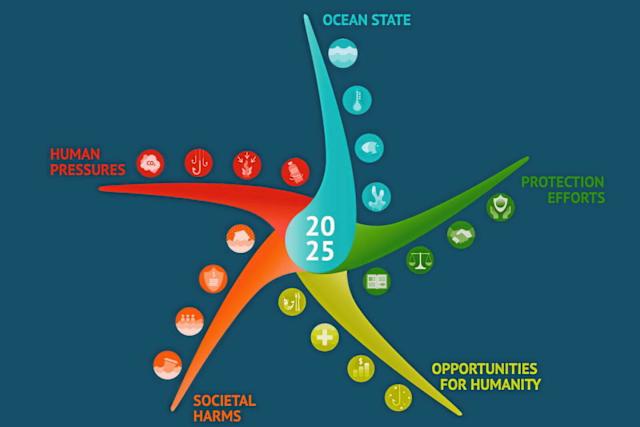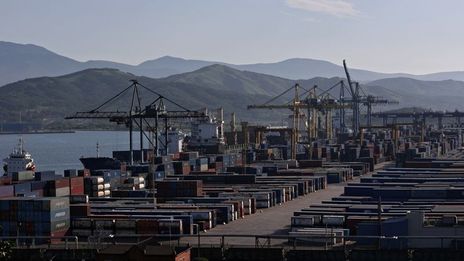Oceanographer Marina Lévy presented in Nice, on the sidelines of the UN Ocean Summit, a new benchmark indicator to monitor the state of the seas.
On June 8, during the third United Nations Ocean Conference (UNOC 3) in Nice, the first global report on ocean health, the Starfish Barometer, was unveiled. French oceanographer Marina Lévy served as the scientific coordinator, alongside Pierre Bahurel, CEO of Mercator Ocean International, which maintains a “digital twin” of the ocean.
The Starfish Barometer aims to provide a clear synthesis of the ocean’s health, human pressures, and their impacts. “The ambition of this barometer is twofold: on one hand, to inform citizens and decision-makers about the state of the ocean, and on the other, to track its evolution year after year,” explains Marina Lévy* to Le Point.
Developed in the shape of a starfish, the barometer is based on five axes. The first focuses on the ocean’s health, while the other four reflect the interactions between humans and the seas. The conclusions are clear: the ocean is in trouble. It is warming, sea levels are rising, and ecosystems are threatened.
A Key Indicator
The barometer shows that human pressures are increasing, threatening marine habitats. Ocean changes are also driving rising human, economic, and environmental costs, with losses from natural disasters exceeding $100 billion annually, increasing insurance premiums, a record number of deaths at sea among migrants, and severe impacts on health and biodiversity due to plastic pollution.
Adding to this is humanity’s growing dependence on the ocean. With marine food production reaching over 115 million tons, this reliance makes the implementation of sustainable practices more urgent and complex than ever.
Source : Le point




